Petra is a place that should be on everybody’s travel bucket list. It’s an UNESCO World Heritage Site, one of the Seven Wonders of the World, and one of the oldest cities in the world. This ancient city can be found deep within the desert of the country Jordan, and was once home to over 30,000 people; the remnants are now a smattering of temples, theaters, tombs, and ruins. And if you can believe it, despite the fact that it’s one of the most well-known archaeological sites in the world, experts estimate that only 5% of the city has been uncovered! We spent a day touring Petra and the nearby Wadi Rum desert as part of an extended trip through parts of Israel and Jordan. The major highlights from our stay in Jordan can be found in the below Petra mini travel guide.
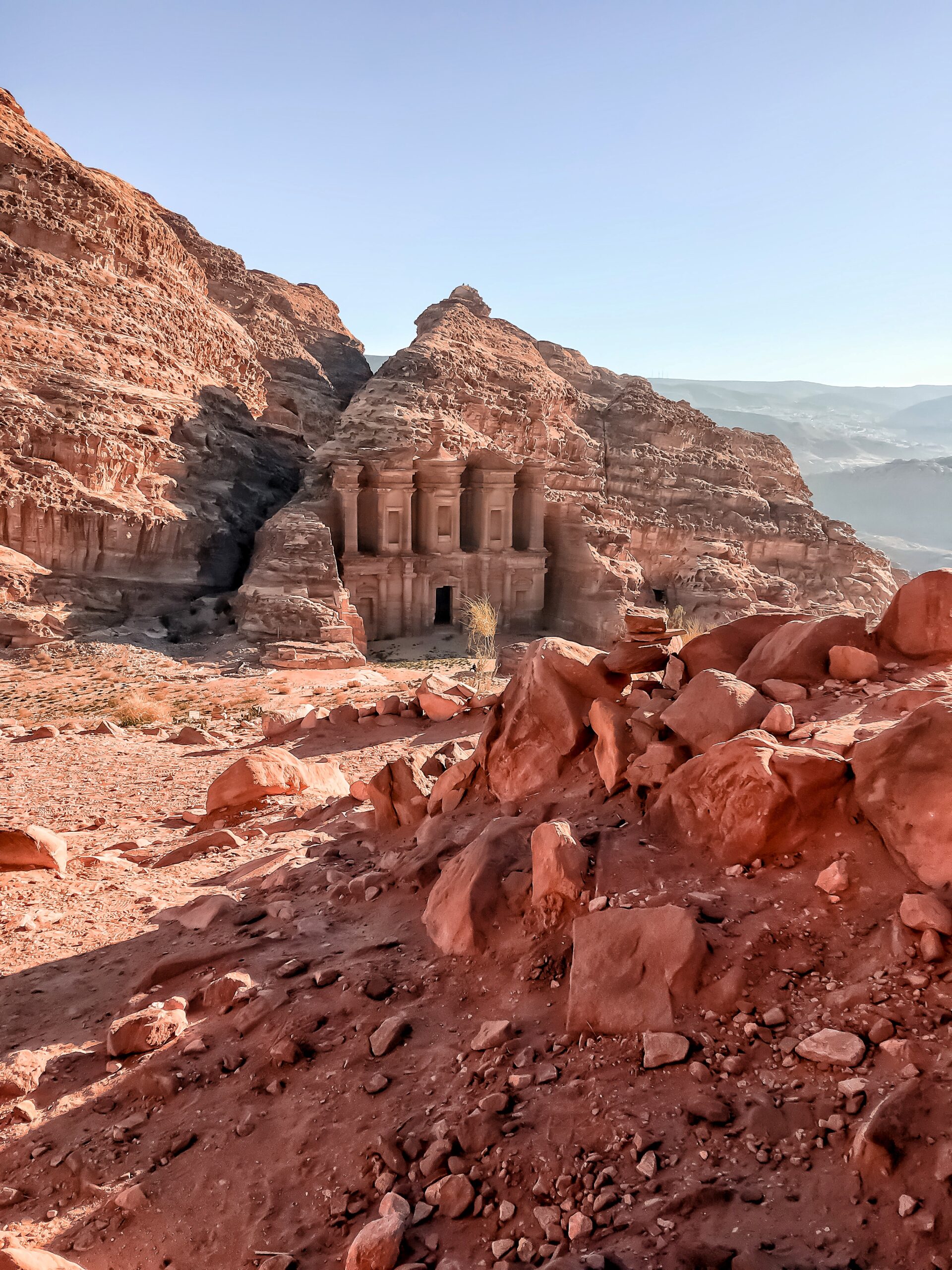
Related Post: The Best Places to Eat in Tel Aviv
Getting to Petra
To get to Petra, we took a bus from the Tel Aviv Central Bus station to the Eilat-Yitzhak Rabin Border Terminal, and then proceeded to cross into Jordan by foot. We were told to budget at least 2 hours for this border crossing but honestly, the entire process took us around 30 minutes. I have to admit that the border crossing from Israel to Jordan was extremely intimidating – instructions on where to go and what to do was limited, and it felt totally bizarre crossing into a new country by foot. Note – there are a LOT of rules and laws you have to be aware of when visiting Jordan from Israel so make sure to do some research on the latest rules and process prior to visiting!
TIP: A passport and visa are required to visit Jordan. Jordan issues visas at most international ports of entry or land border crossings upon arrival. We paid for our visa at the border crossing, and the visa was valid for 30 days. Visas currently cost 40 JD ($56.50 USD) each.
After our border crossing, we were picked up by a driver that we had pre-arranged with our hotel. The whole pick-up process was insane – as soon as we entered into Jordan, we were bombarded by 20 different taxi drivers trying to get us to ride with them. We had to navigate through the crowd to find our assigned driver with the hotel, who was patiently waiting for us near the bus stop of the shuttle Eilat-Aqaba and had our passport photos and names printed on a piece of paper. As soon as he acknowledged us and took our luggage, the rest of the taxi drivers started yelling at him and he had to show them our scanned passport photos as ‘proof’ that he didn’t cut the line. It was insane. We had no idea what on earth was going on at the time, and it felt super nerve-wracking to enter a new country and suddenly be shouted at non-stop by a bunch of aggressive drivers!
TIP: During the border crossing, make sure to fill out the Independent Travelers’ Entry Manifest through South Wadi Araba Crossing Border’ and then get this manifest stamped by the Petra ticket office as proof that you were visiting as a tourist. This will be important for when you exit Jordan.
Prior to dropping us off at the hotel, our driver made a ‘pitstop’ at a souvenir shop where we were offered some coffee/tea. We didn’t end up buying anything at the shop, and thankfully the shop owner was a good sport about it.
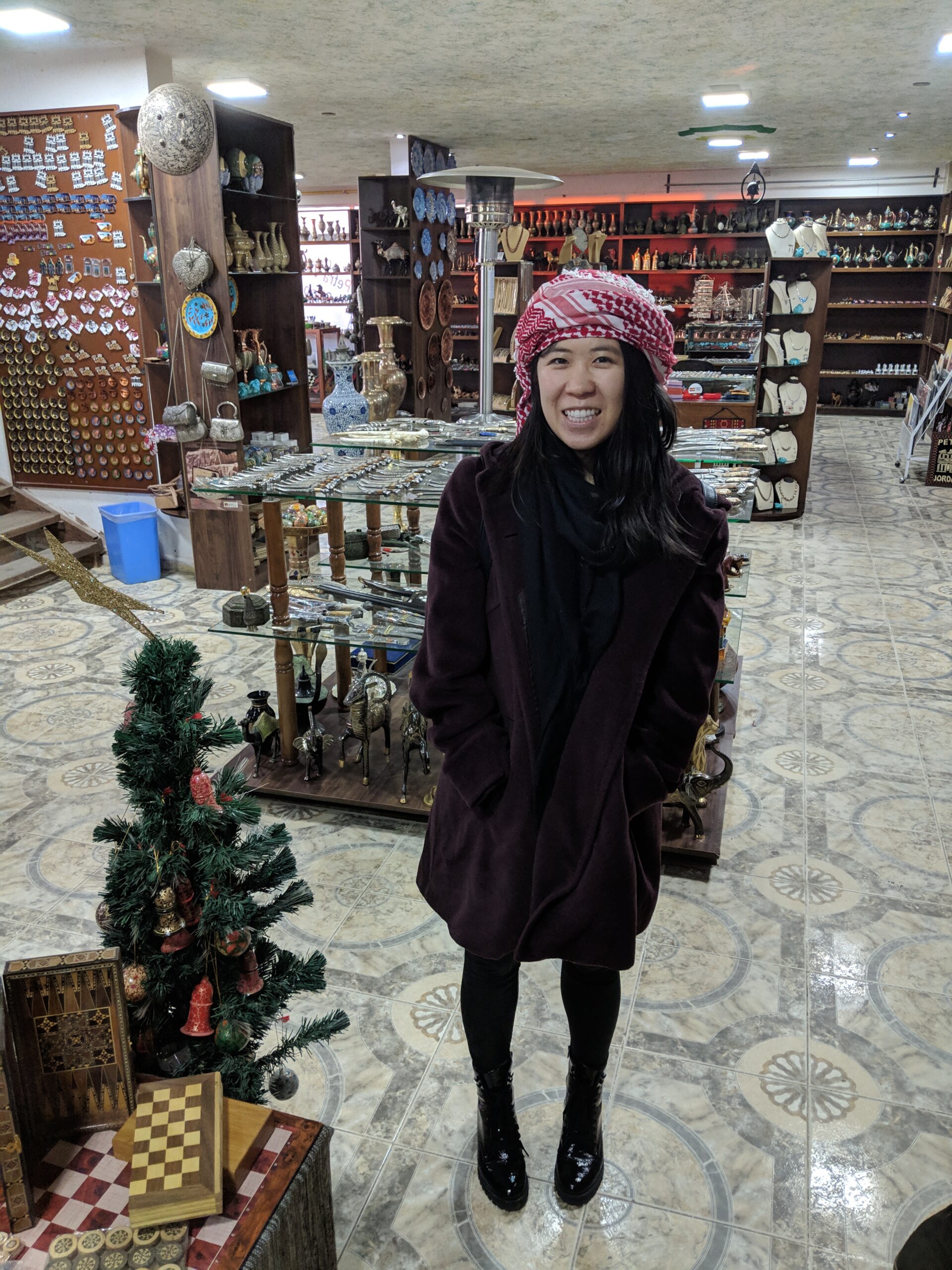
If you’re not traveling to Petra via Israel like we did, you will likely be flying into Queen Alia International Airport which is located within 30-minutes driving distance from the capital city of Amman, and is a 3-hour drive from Petra. While there are plenty of companies that offer organized tours of Petra from Amman, I’d recommend visiting Petra independently if you can (i.e., either use public transport or rent a car and drive to Petra). Petra is easy to tour on your own, and it’s nice to have the flexibility to visit the various sites at your own pace.
When to Visit Petra
Due to its location in the mountains, Petra can experience huge changes in temperature between the day and night. Winters can be cold, and summers are outrageously hot. We visited Petra during our Christmas break and were lucky enough to catch some milder weather – even though it was chilly during the morning and evening (you’ll want to bring a decent waterproof/windproof jacket), the weather was quite mild during the day! If you can, I’d try to visit Petra during the spring or fall seasons for the best chances of a good visit – Petra is known to get extremely slippery when it rains (which can happen frequently during the winter season), and the site is closed when there is snow.
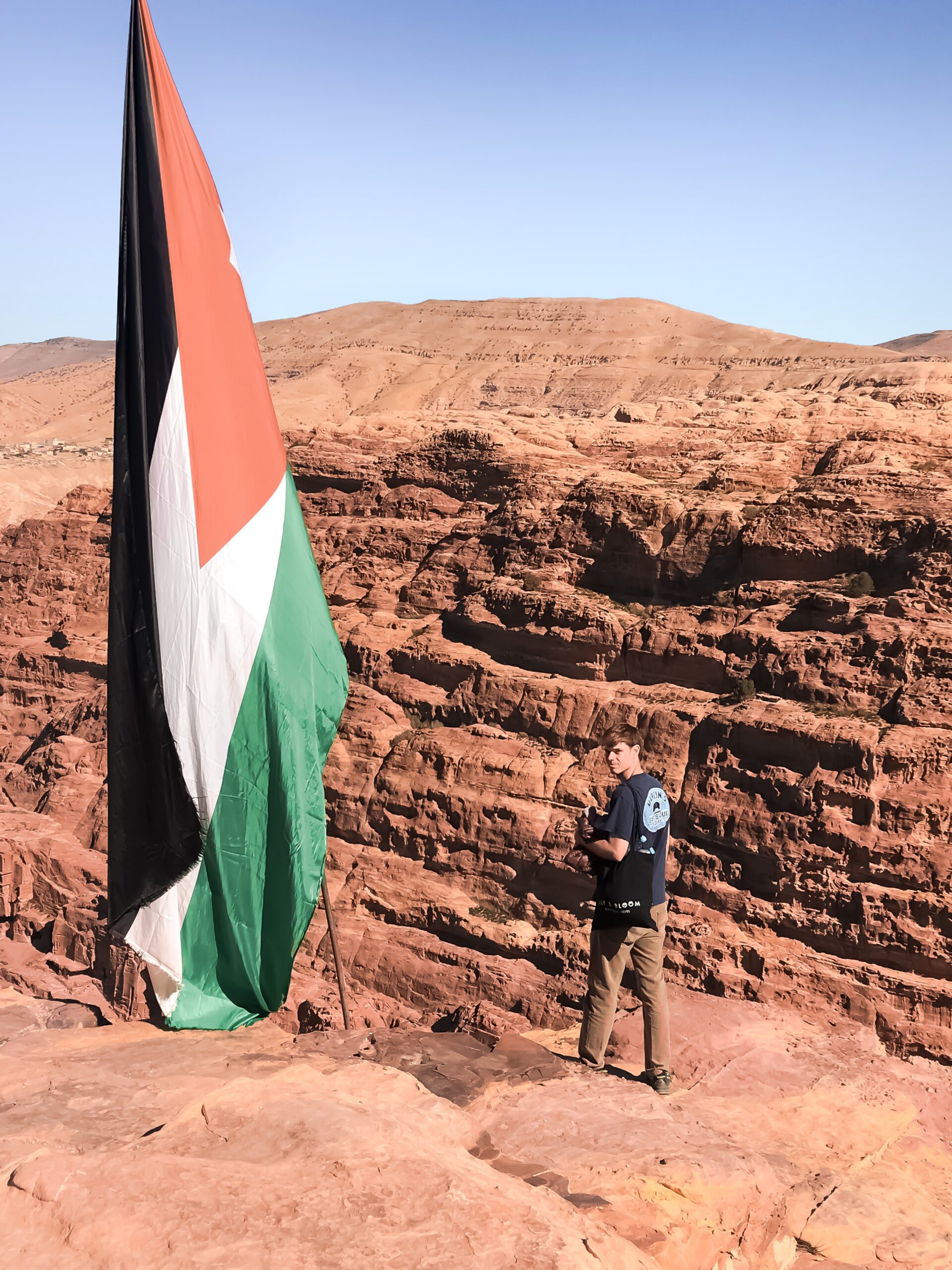
Where to Stay in Petra
There are a ton of lodging options to suit a wide variety of tastes and budgets, however, I HAVE to recommend that you stay at the Movenpick Hotel while you are visiting. You can’t beat the location of the hotel – it’s literally located at the entrance of Petra which makes it easy to visit during the early morning hours to avoid the crowds. Plus, it’s a 5-star hotel and features huge rooms and a wonderful breakfast and dinner buffet every night.
How to Spend a Day in Petra
We woke up early to be at the Visitor Center right at 6am when it opened. If you want to experience the beauty of Petra without hordes of tourists, I absolutely recommend that you do what we did and get there early! The entry ticket to Petra is currently JD50 for one day or JD55 for two days. Most tourists follow the same path through Petra – the journey starts by walking down the Siq, which is a dramatic passage between two gigantic rock walls.
The Siq
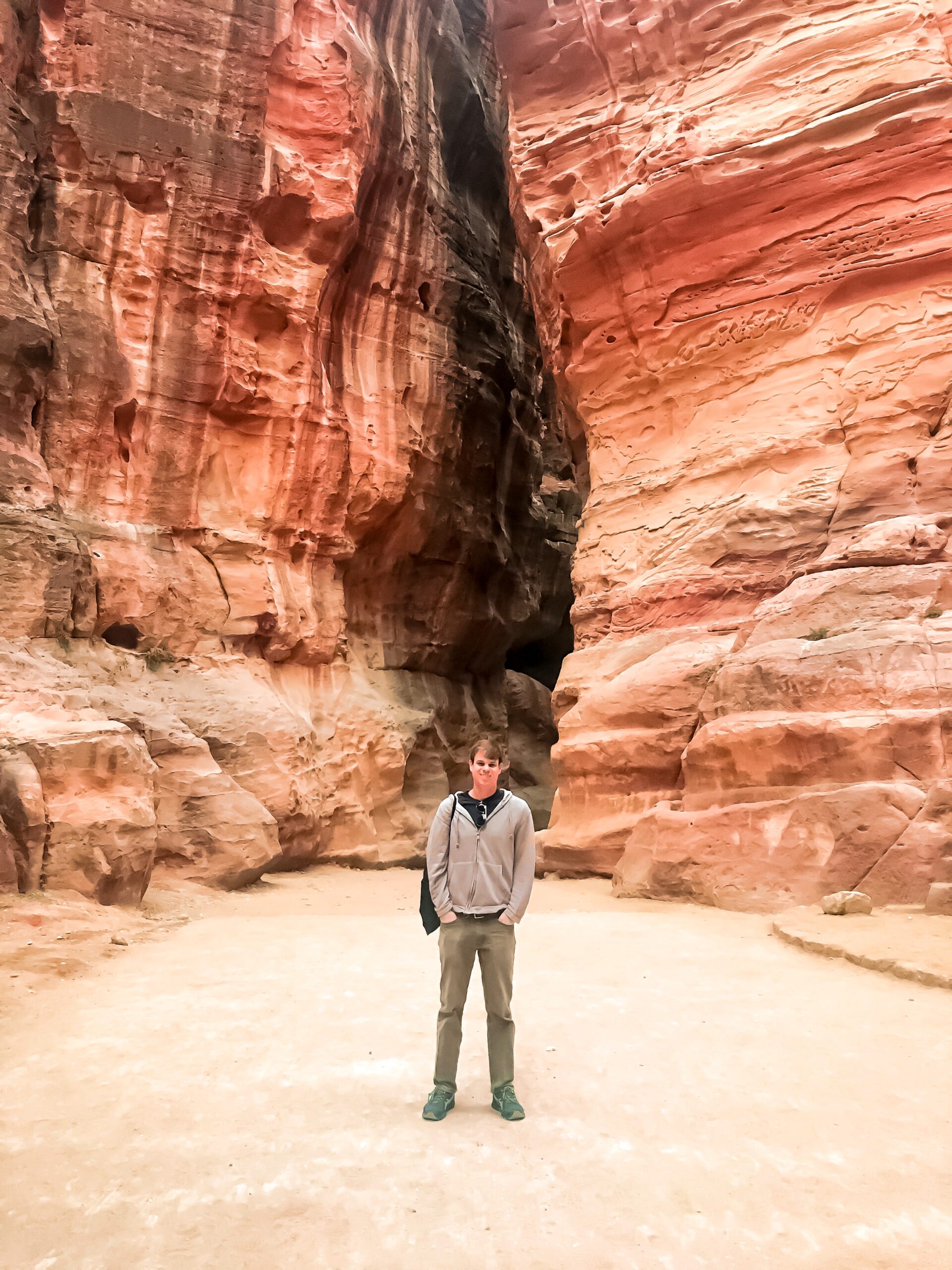
The Treasury
Walking through the Al Siq canyon, you can’t help but be awestruck by the surrounding rosy pink sandstone cliffs….and then after 10 minutes of walking, you see it…the first glimpse of an ornate temple carved into rock….the world famous Treasury. This is where most tourists spend the majority of their time, and rightly so! This magnificent facade is over 40 meters high, and was estimated to be constructed in the 1st century B.C.. Archaeologists still debate the purpose of this grand building – some say it is a temple, others say its purpose was to store the Pharaoh’s treasure, and others claim it is a memorial for royalty.
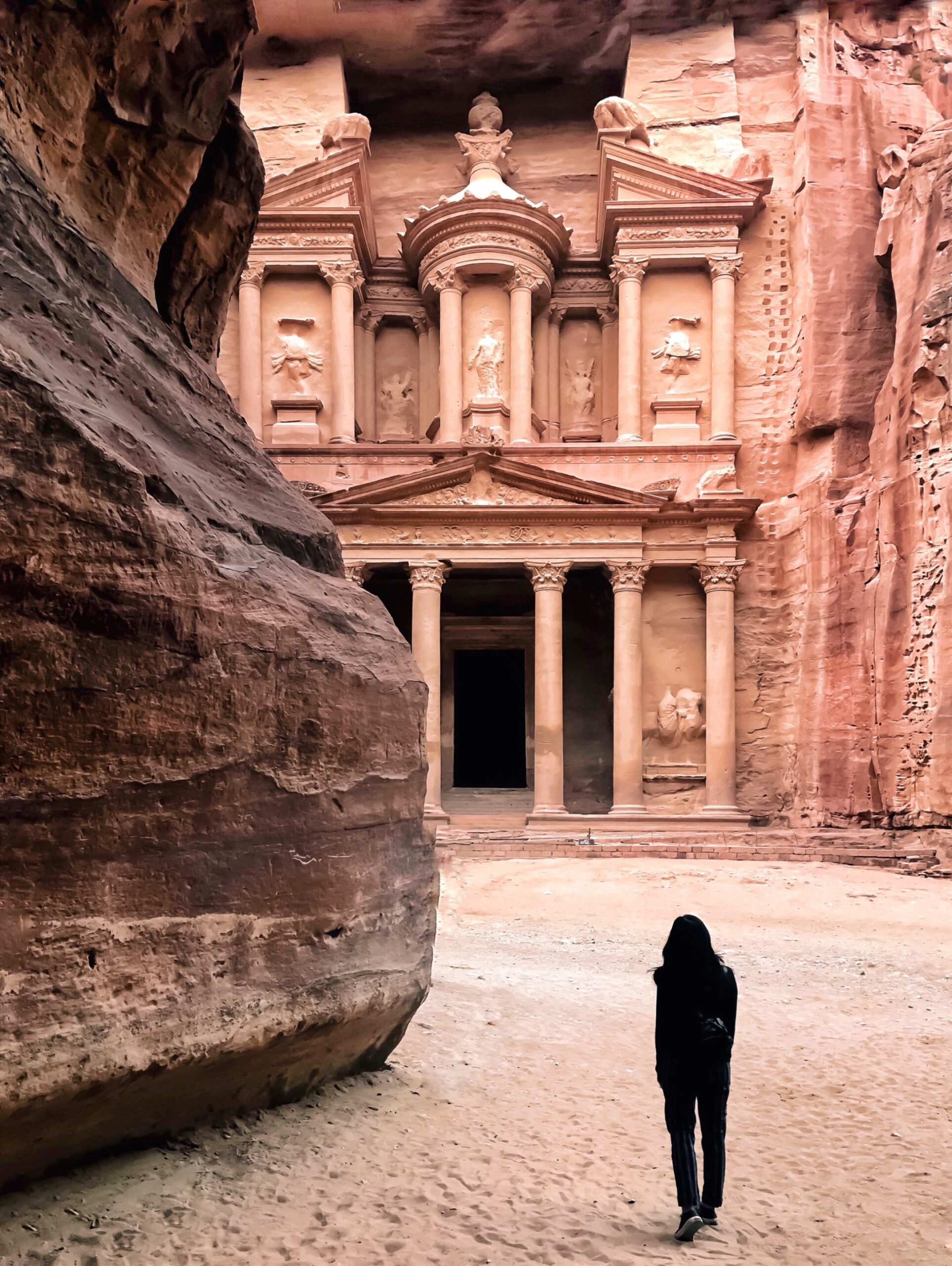


The detail on the façade is so intricate, and the rock face so smooth that it’s hard to imagine exactly how the Treasury was built. It really is a true wonder of the world! And because we entered Petra early, we were able to enjoy this magnificent beauty on our own.
TIP: Petra offers night tours called ‘Petra by Night’ every Monday, Wednesday, and Thursday when the Siq and Treasury are lit up by candles. The tour starts at 8:30pm and costs JD17. We didn’t have time to do this, but I hear that it’s pretty magical being able to experience the magic of Petra by moonlight!

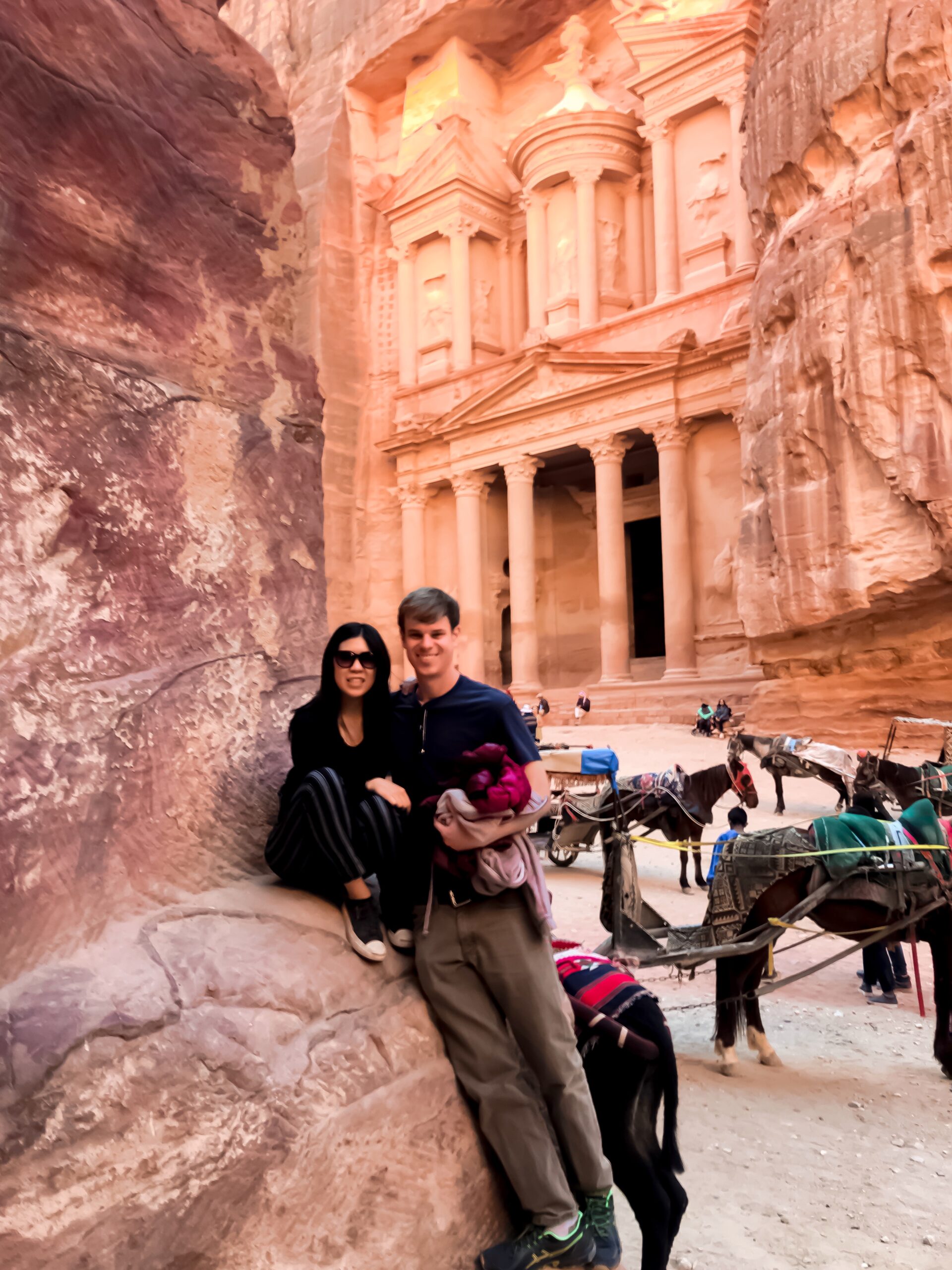
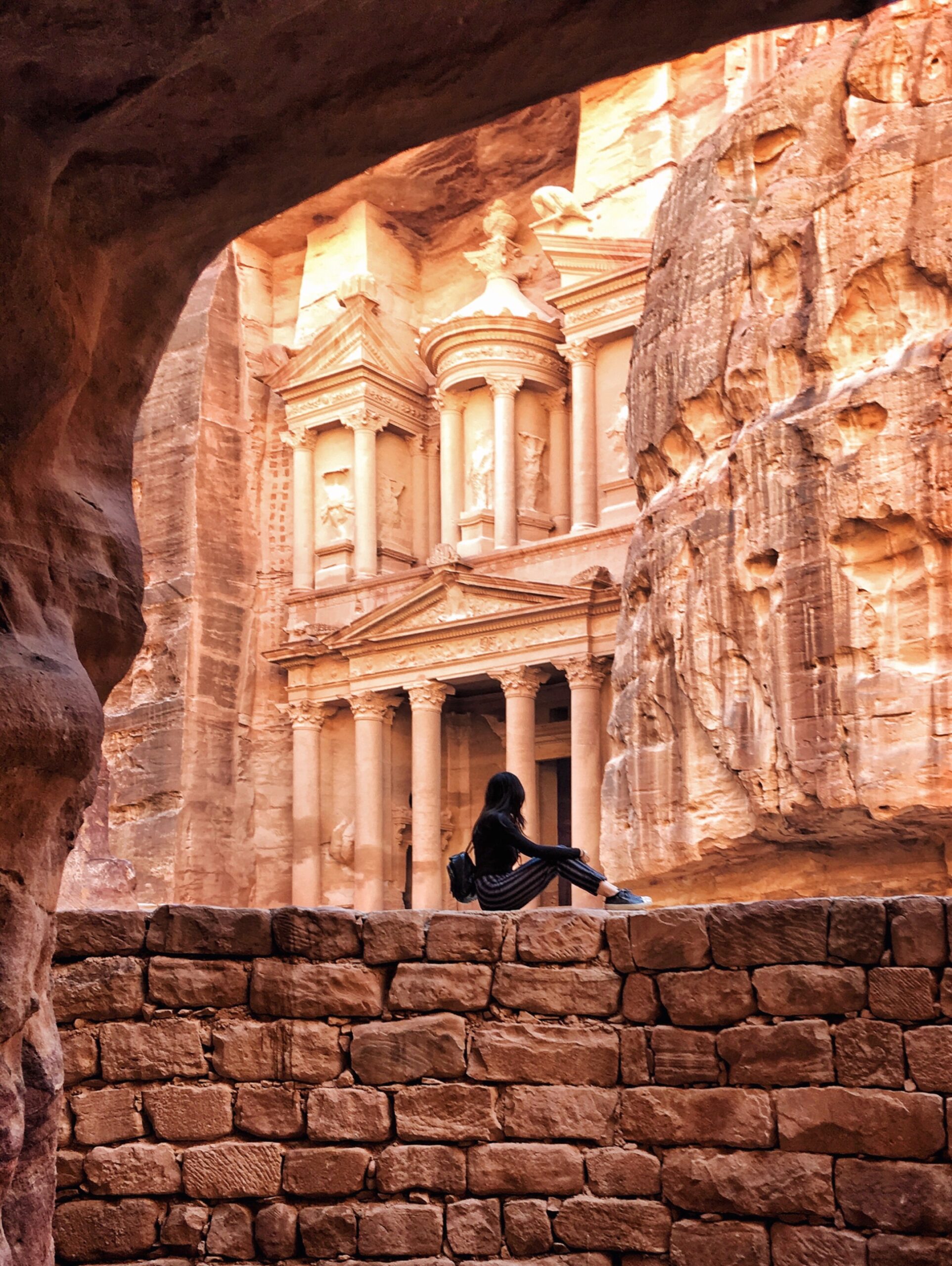
Supposedly, there is a ‘secret trail’ hike comprised of 600 or so steps to a viewpoint overlooking the Treasury where you can get some great photos. We never made it up there. The minute we made our way to the steps, we were bombarded by a gang of local Bedouins who harassed us for money and claimed that we had to pay another ‘entry fee’ to access the viewpoint. We knew this to be false based on everything we had researched about Petra, but every time we tried to pass them by, they would block our way. Things got pretty heated and we almost threatened to call Petra police/security because they started to get physical…but in the end, we decided to just move onto the next site. It was super frustrating!
The Monastery
While most people continue along the Petra tourist path to visit the Amphitheatre, Royal Tombs, and Colonnaded Street…we actually skipped past all of that (only temporarily) and headed straight to the Monastery. Getting to the Monastery was no easy feat – while the hike was relatively straightforward (it took us roughly 40 minutes to get there), getting there still required climbing up some 850-900 wobbly steps, past several local Bedouin stalls…all of this done while being surrounded by donkeys which it turns out, don’t smell very good! Still, the Monastery was worth the trek, and it’s a shame that most tourists don’t make it up there.
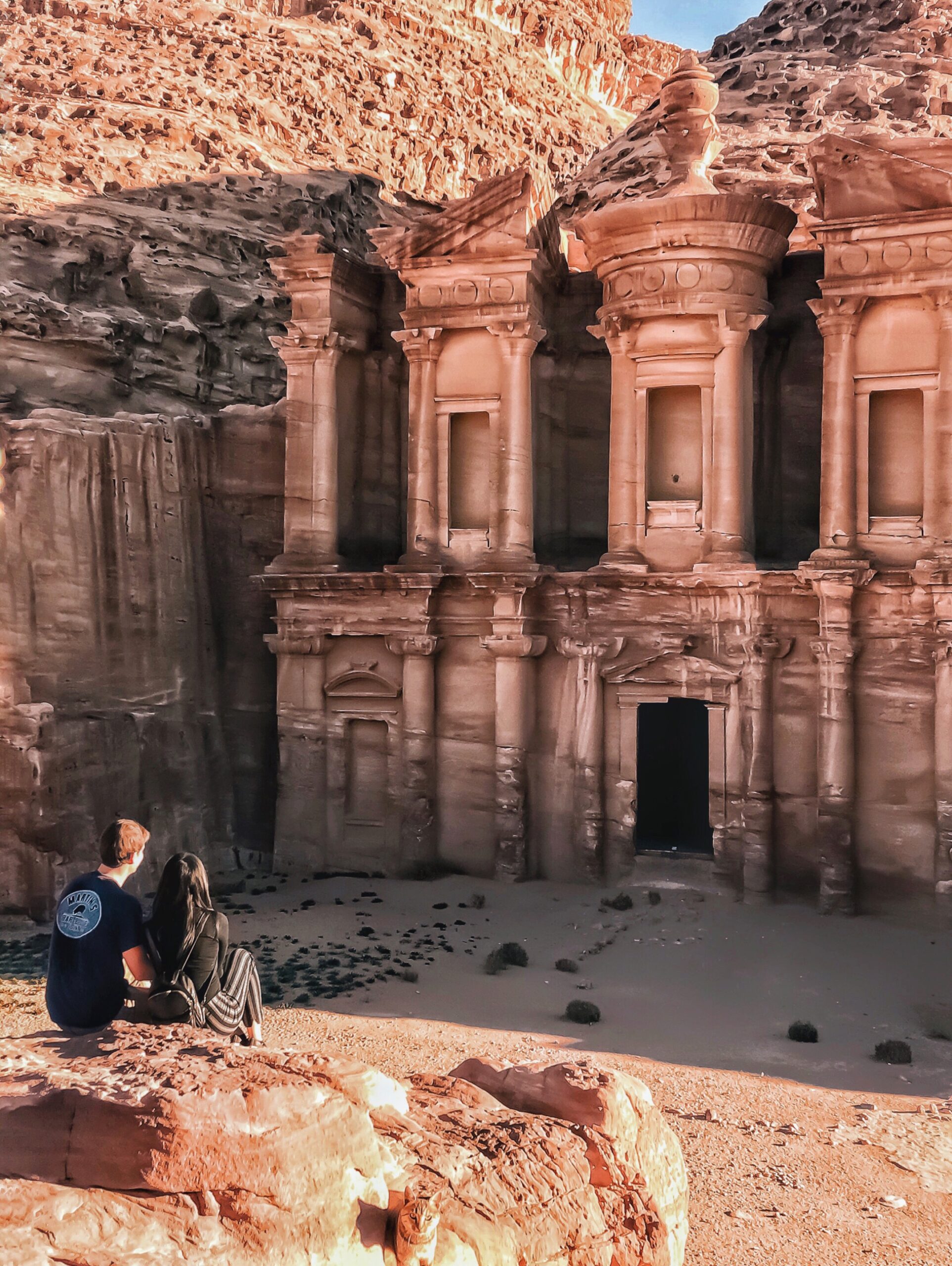
Note – while it’s possible to get up to the Monastery via hired donkey ride, I don’t recommend it, especially since the treatment of these animals is questionable!


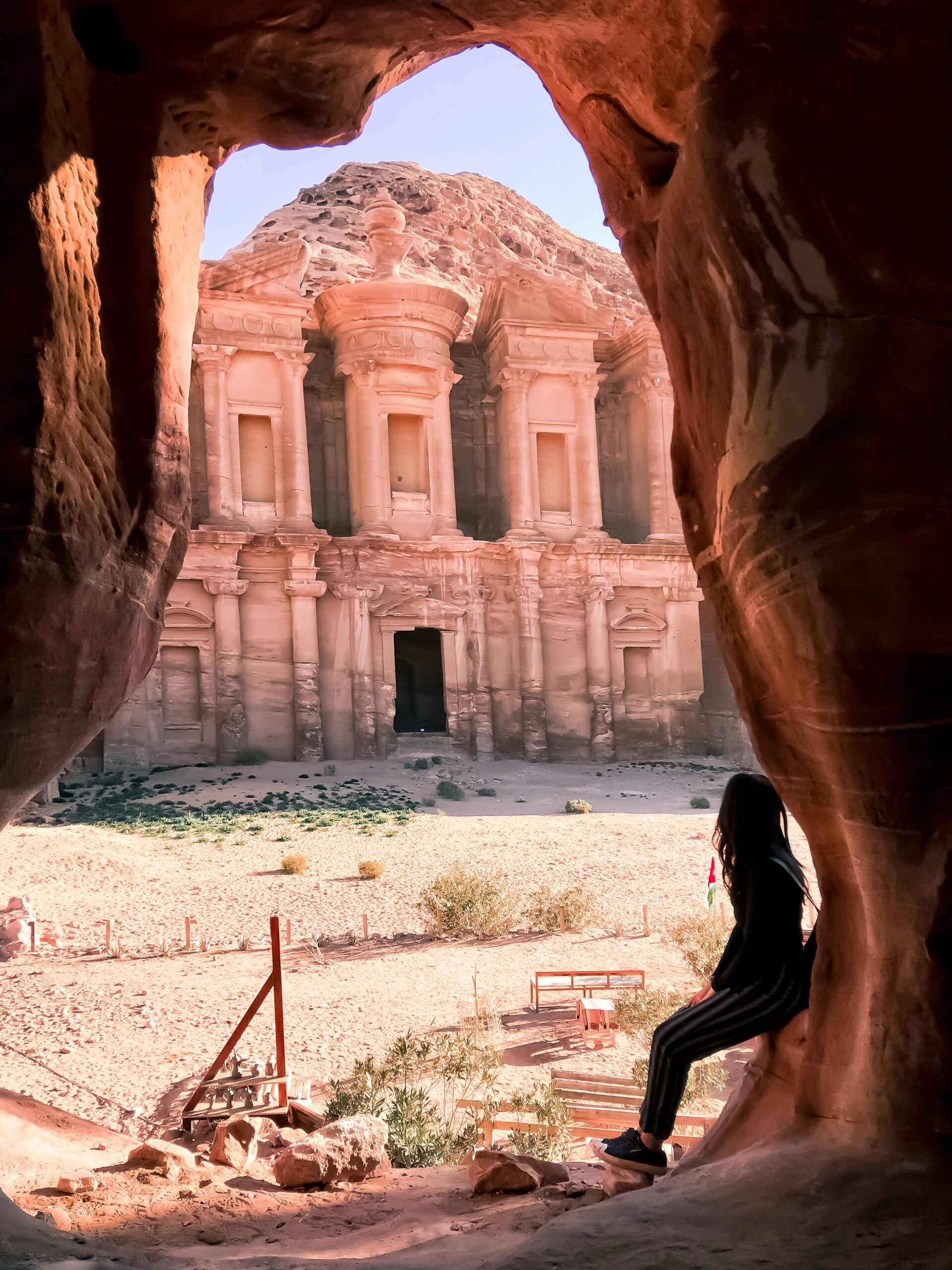
Although the Monastery is similar in design to the Treasury, it’s actually a lot bigger (50 meters high, 45 meters wide). It’s estimated that the Monastery was first built in the 3rd century BCE as a Nabataean tomb, and then used as a church (hence the name).

The Royal Tombs
After making our way down from the Monastery, we looped back to visit the other major highlights of Petra, including the Royal Tombs and Colonnaded Streets. There are 5 named tombs in total – the Urn Tomb, Silk Tomb, Palace Tomb, Corinthian Tomb, and the Tomb Of Sesto Fiorentino. All of these tombs are richly decorated and were used as places of worship during the Byzantine era.


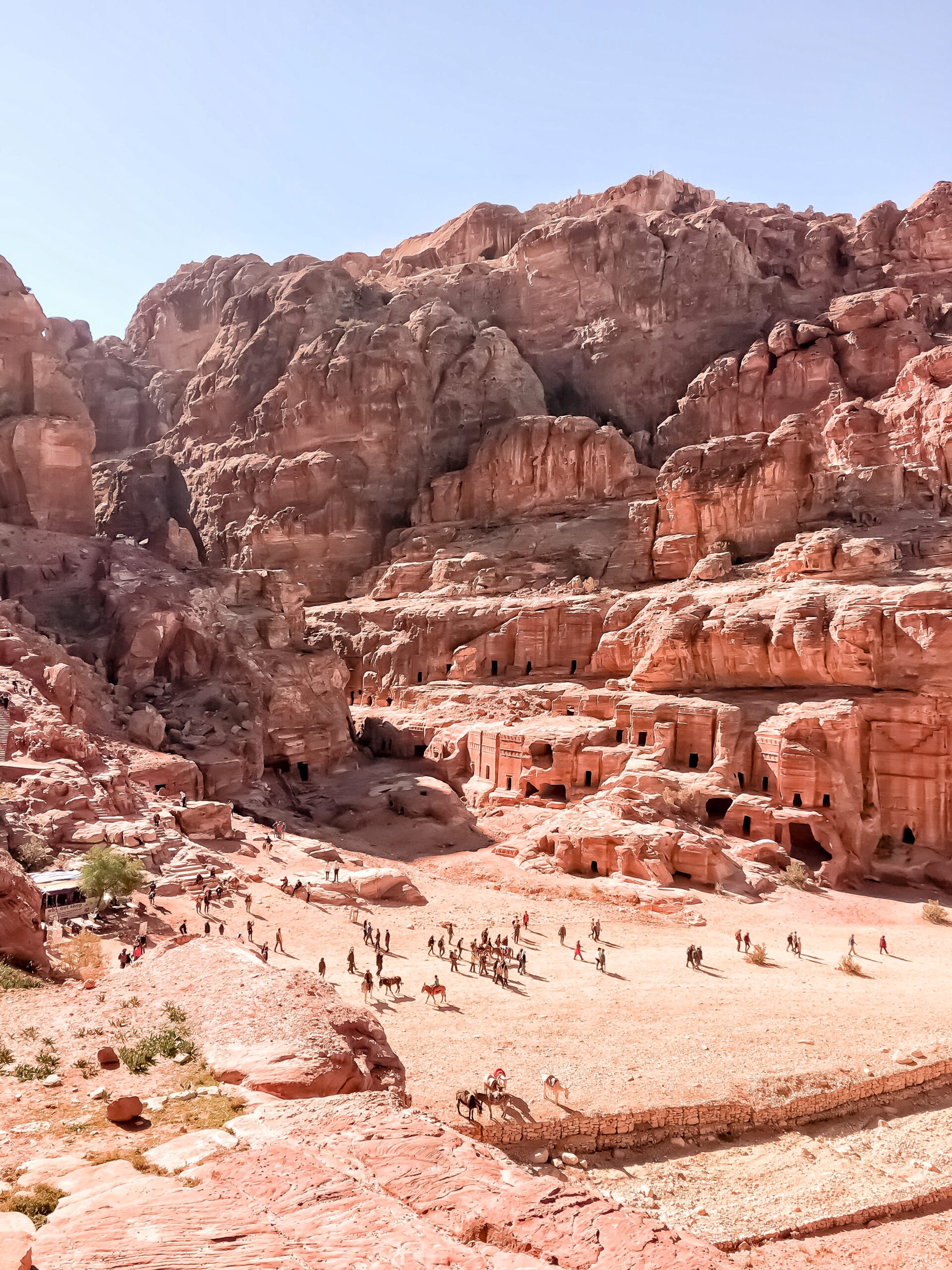
This itinerary took us the entire day, and we exited Petra around 4pm which is the site closing time during the winter season. While some guidebooks suggest that you explore Petra over the span of multiple days, I actually don’t think it’s necessary – a full day’s worth of time at Petra is more than enough to be able to appreciate all of the highlights without feeling rushed, especially if you start the day early like we did.
Visiting Wadi Rum
After visiting Petra and spending the night at the Movenpick hotel, we made a short half-day trip out to nearby Wadi Rum, which is a protected desert landscape in Jordan. Wadi Rum is roughly a 1.5 hour drive away from Petra, and the route takes you along some beautifully scenic roads. Wadi Rum is nicknamed the ‘Valley of the Moon’ for it’s vibrant red sand (similar to the planet Mars!) and odd alien-like rock formations. You may recognize some of the landscape which has served as a backdrop for many famous Hollywood movies including The Martian, Transformers, and Prometheus.
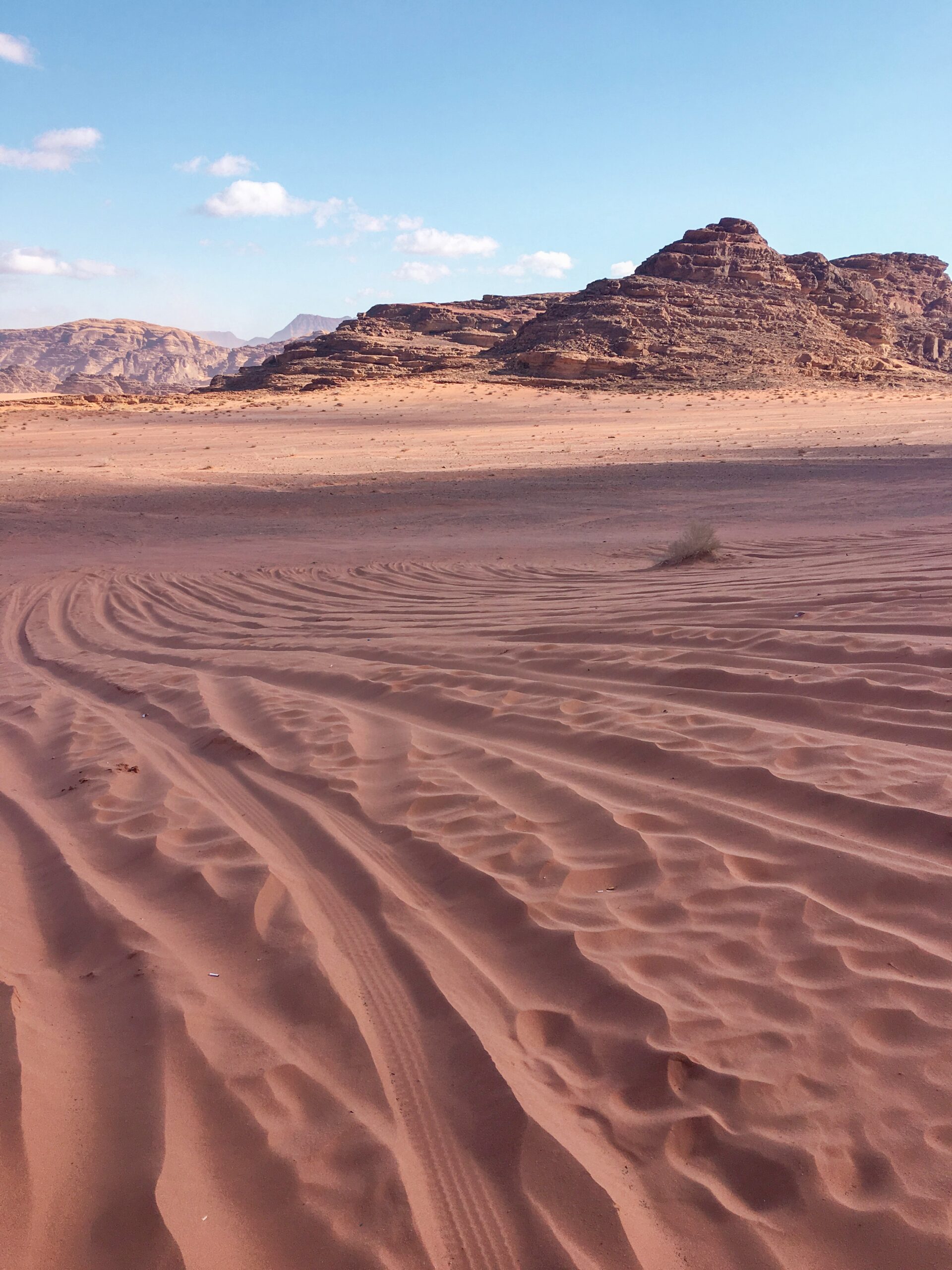
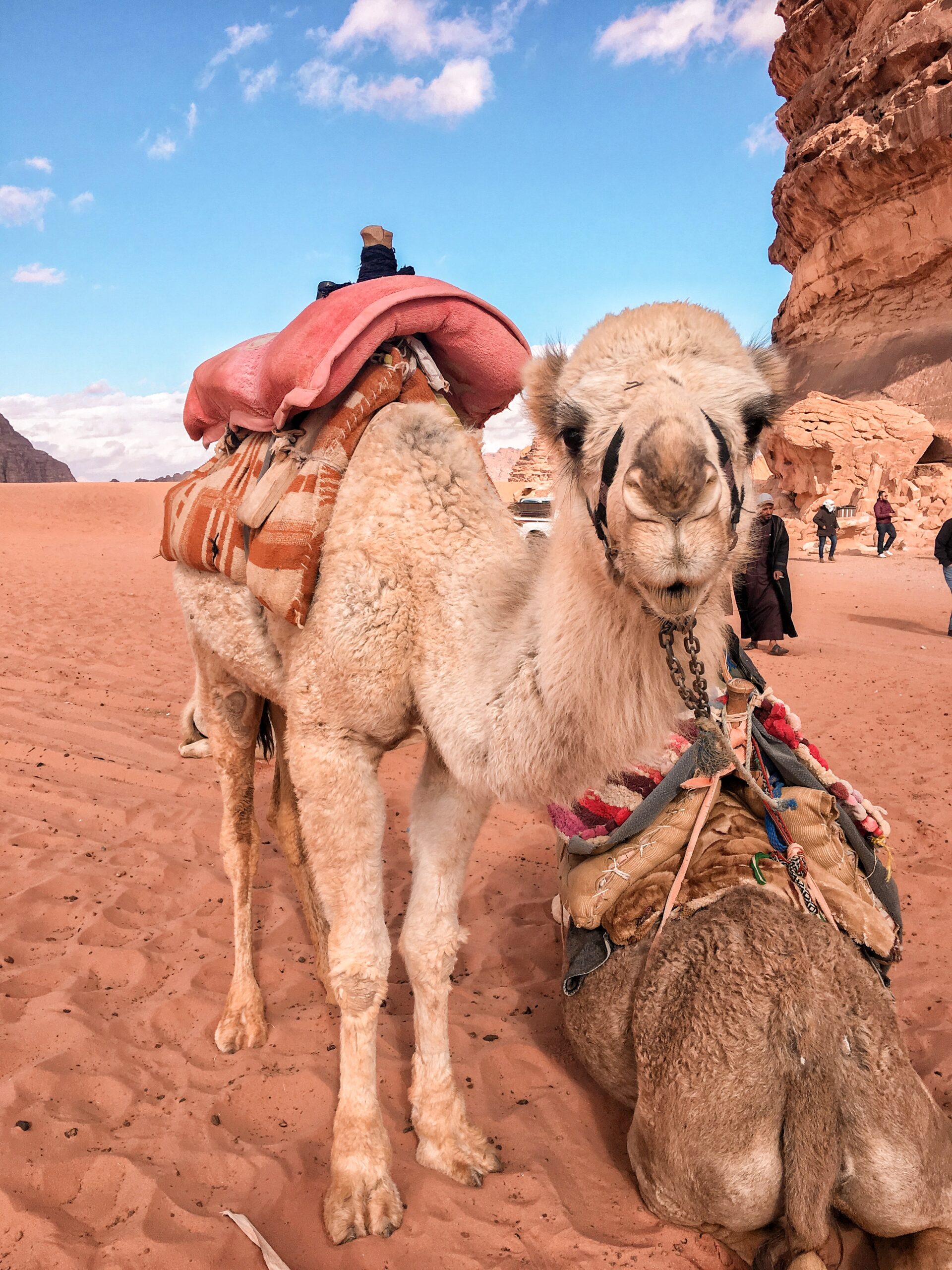

Our tour of Wadi Rum was spent mostly riding in a jeep, but we were able to get out and stretch our legs for an hour or so, and explored some of the dramatic caverns and narrow gorges in the area.
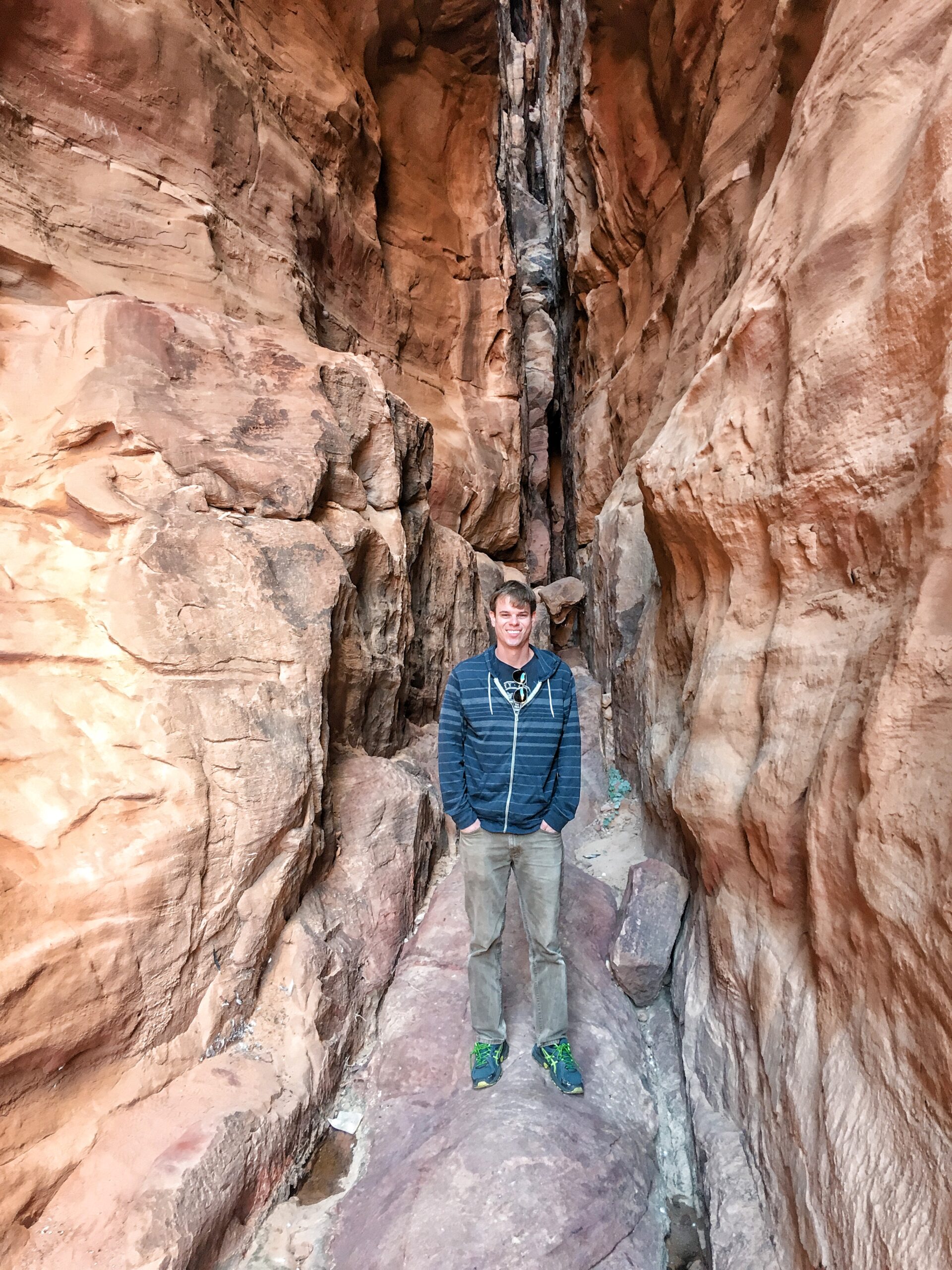


Our driver took us to visit a goat-hair tent owned by some local Bedouins (Bedouin comes from the Arabic badawi, which means ‘desert dweller’), and they offered us some tea. We sat around the firepit with them as we waited for the kettle to boil over the fire, and got to learn a bit more about the local culture and history. Apparently, there are still several hundred Bedouins living in the area! Wadi Rum was once inhabited by the Nabateans and you can still see a lot of their marks and drawings carved into the rock walls of the desert.


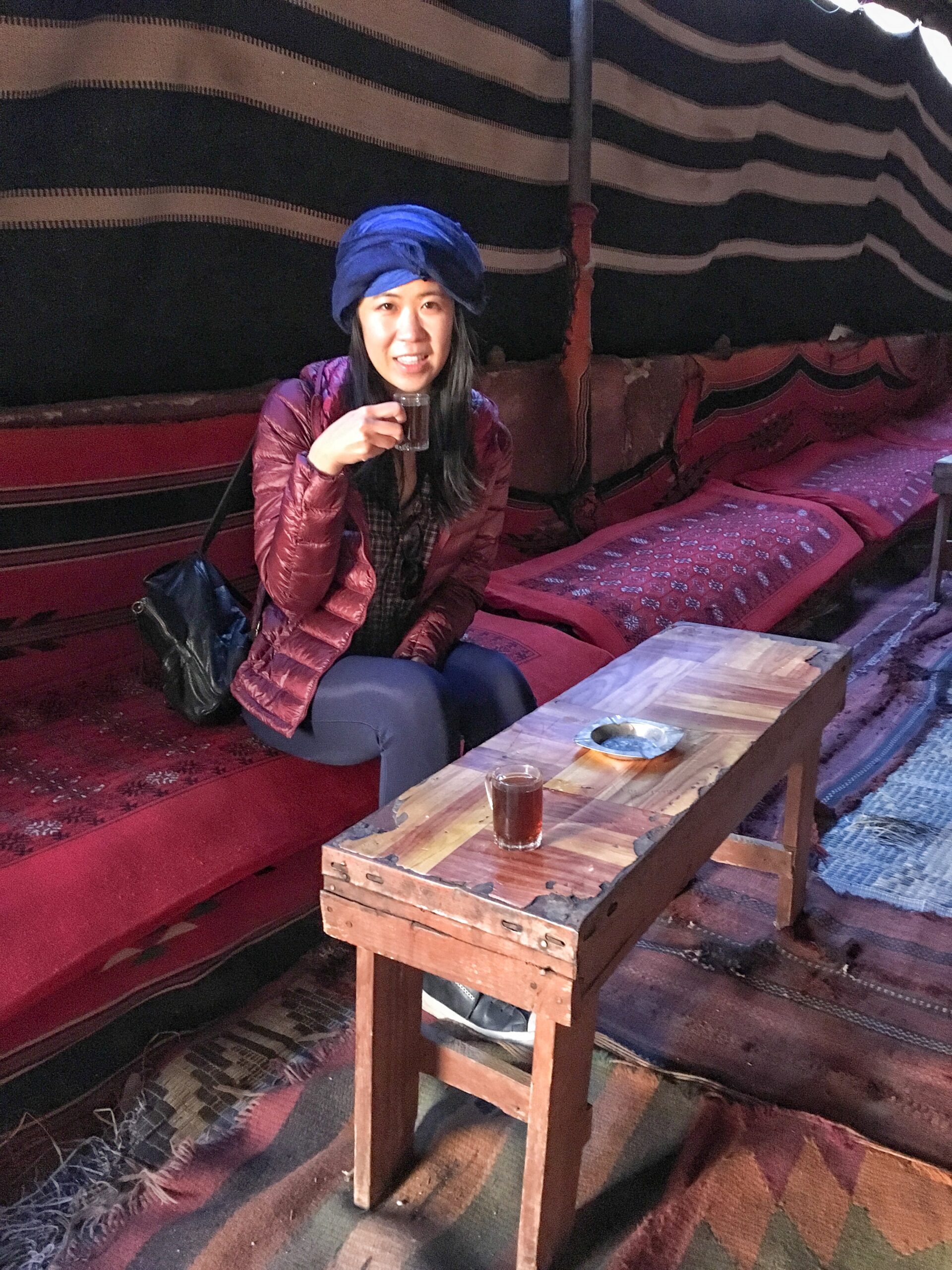
Before our driver took us to the border to enter back into Israel, he was adamant that he helped take some photos of us. He enthusiastically instructed us how to pose and did a weird thing with our phone cameras which allowed us to get ‘identical twin’ photos – the results were pretty hilarious!

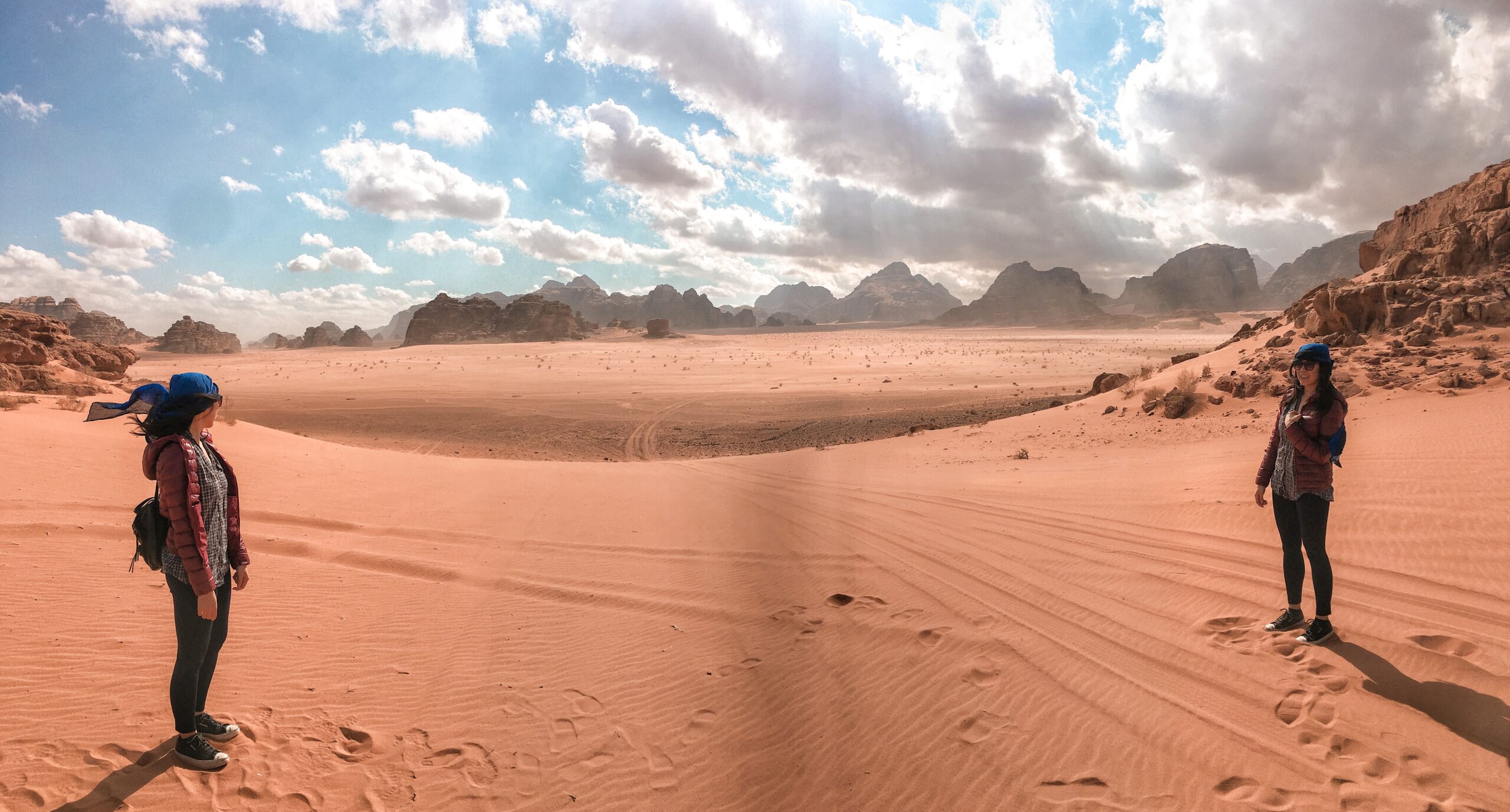

You Might Also Like: 3 Days in Joshua Tree National Park
You Might Also Like: A Guide to Visiting the Sahara Desert
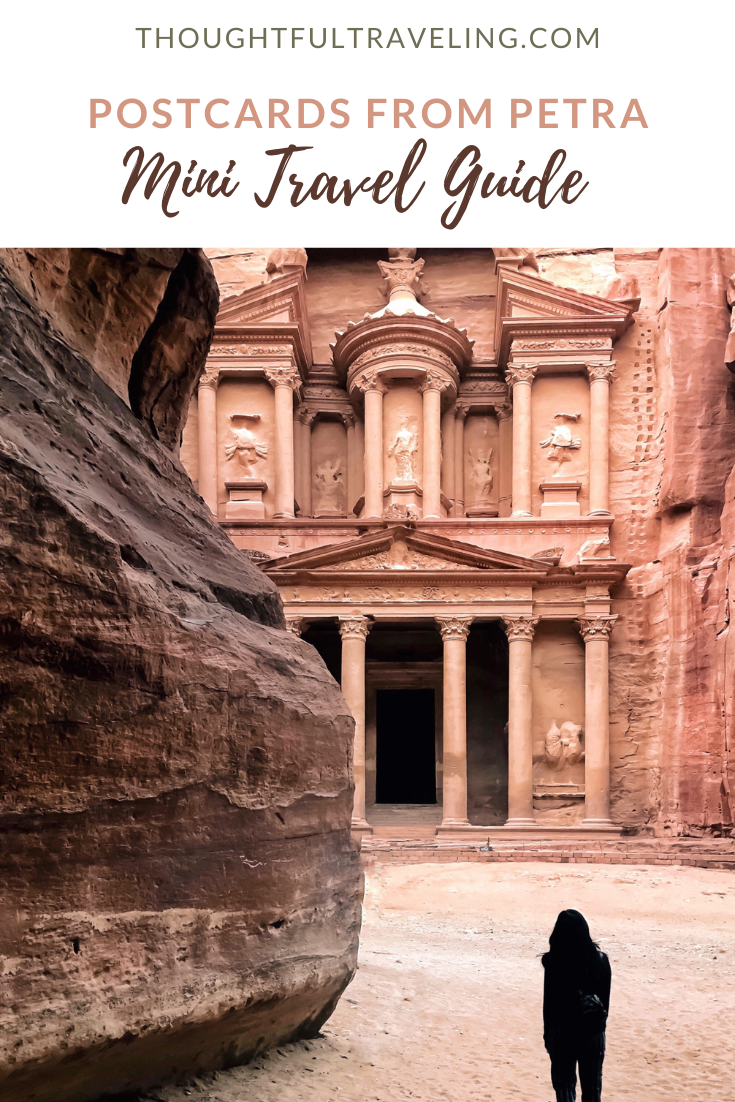
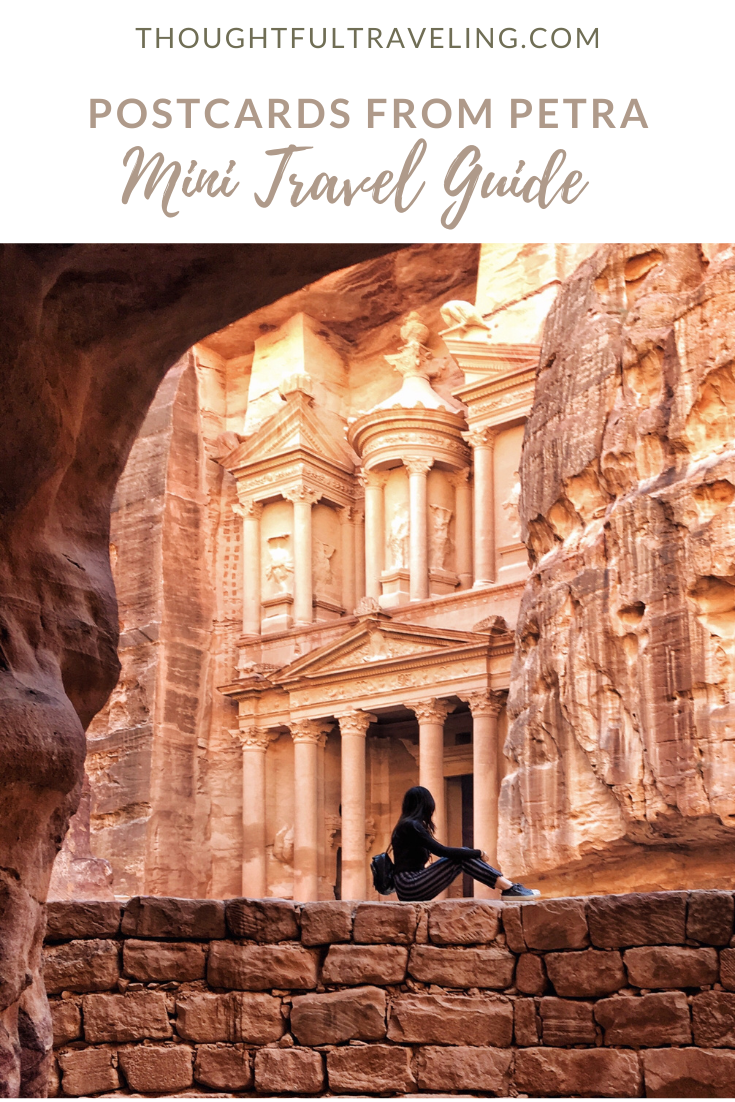

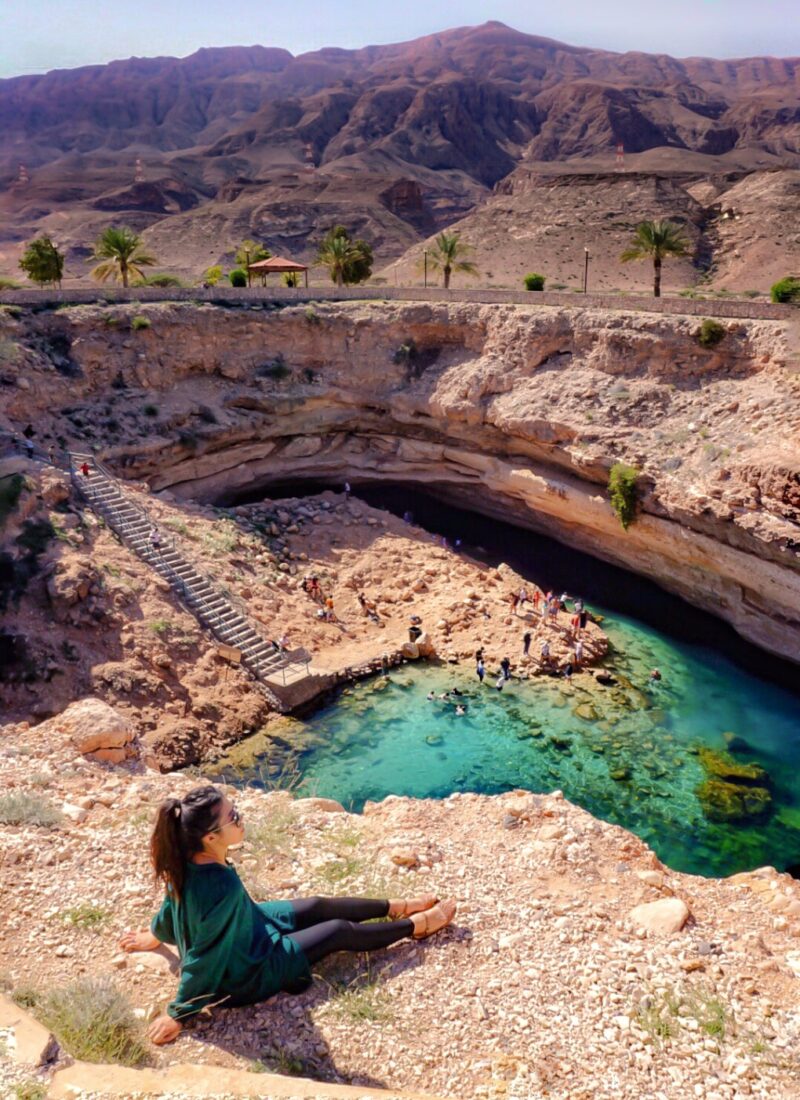
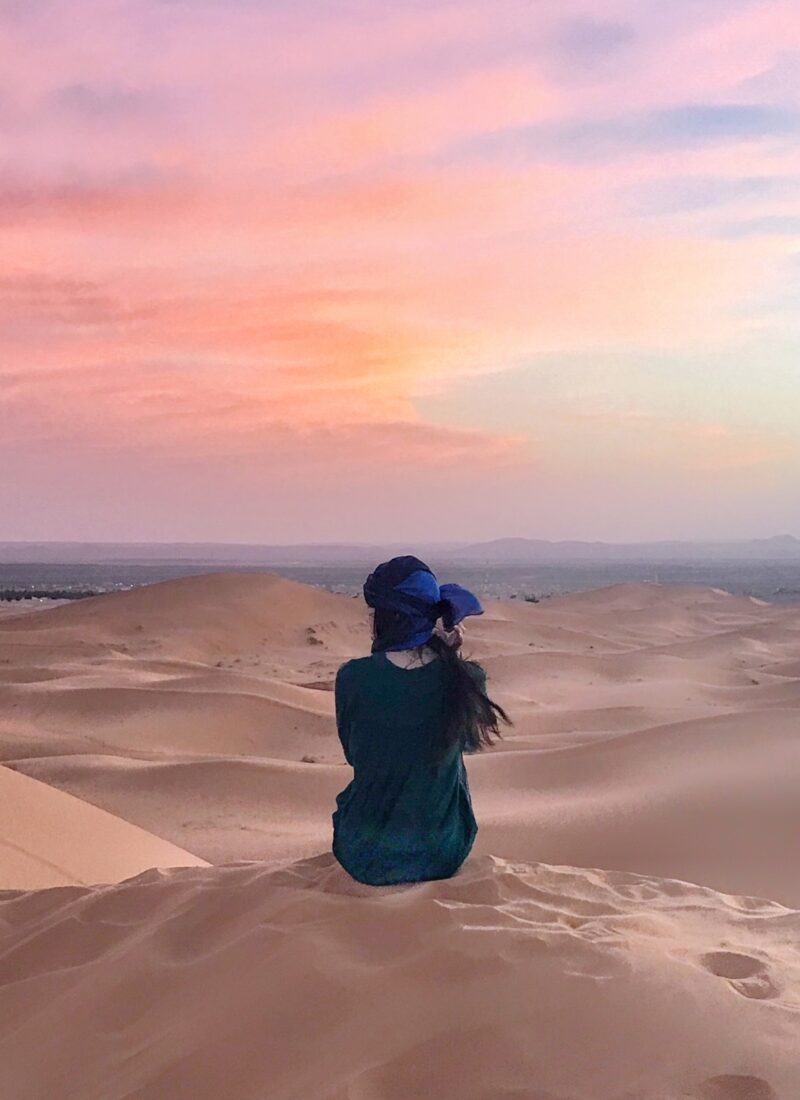
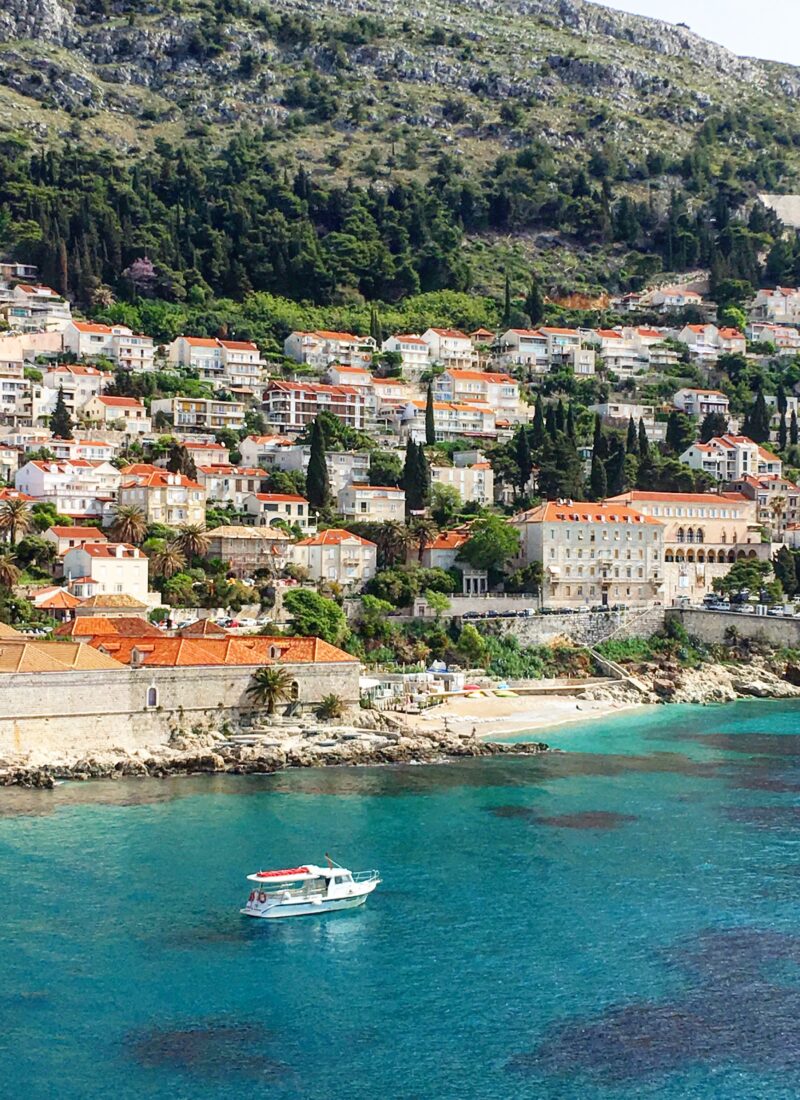


Leave a Reply